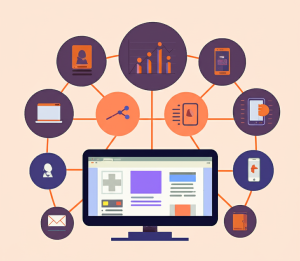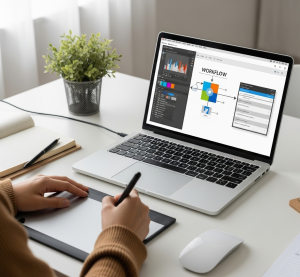Beyond the Grind: How to Boost Productivity and Master Multitasking in the Digital Age
Introduction
In today’s hyper-connected world, our digital workspaces are constantly buzzing with notifications, emails, and an endless stream of information. While technology offers incredible tools for productivity, it also presents a significant challenge: how to stay focused, manage multiple tasks efficiently, and avoid the dreaded digital overwhelm. This article delves into practical strategies and tools that can help you transform your chaotic digital environment into a streamlined hub of efficiency, allowing you to achieve more with less stress.
The Myth of Multitasking: Understanding Its True Nature
Before we dive into mastering multitasking, it’s crucial to understand what it truly means. Often, what we perceive as multitasking is actually “task switching” – rapidly shifting attention between different activities. While our brains are incredibly adaptable, constant task switching can lead to reduced focus, increased errors, and diminished quality of work. The goal, then, isn’t to do everything simultaneously, but to manage tasks intelligently and minimize unnecessary distractions.
 Foundational Principles for Enhanced Productivity
Foundational Principles for Enhanced Productivity
Solid productivity begins with fundamental habits and practices.
Define Your Priorities
Before you even open your computer, identify your most important tasks (MITs) for the day. Tools like the Eisenhower Matrix (Urgent/Important) or simply a prioritized to-do list can help you focus on what truly matters. Knowing your priorities prevents you from getting sidetracked by less critical activities.
Time Blocking and Deep Work
Allocate specific blocks of time for focused, uninterrupted work on your most important tasks. During these “deep work” sessions, minimize distractions by closing unnecessary tabs, silencing notifications, and informing colleagues of your unavailability. Even 25-minute Pomodoro sprints can yield significant results.
Batch Similar Tasks
Instead of tackling emails, then a report, then more emails, try to group similar tasks together. Respond to all your emails at designated times, make all your phone calls back-to-back, or dedicate a block to administrative tasks. This reduces mental overhead from switching contexts.
The Power of Breaks
Counterintuitively, regular breaks can significantly boost productivity. Short breaks prevent mental fatigue, improve focus, and allow your brain to process information. Step away from your screen, stretch, grab a drink, or simply look out a window.
 Tools and Techniques for a Streamlined Digital Workflow
Tools and Techniques for a Streamlined Digital Workflow
Now, let’s explore digital tools and techniques that can help you implement these principles.
Task Management Systems
Whether it’s a simple app like Todoist or Microsoft To Do, or more robust project management software like Asana or Trello, a centralized system for tracking your tasks is indispensable. Break down large projects into smaller, manageable steps and assign due dates.
Digital Note-Taking
From quick ideas to comprehensive meeting notes, having a reliable digital note-taking system (e.g., Notion, Evernote, OneNote) allows you to capture information quickly and access it across devices. This reduces the cognitive load of remembering everything.
Email Management
Your inbox can quickly become a black hole for productivity. Implement the “inbox zero” philosophy by processing emails immediately (delete, delegate, respond, or defer) rather than letting them pile up. Consider using email rules and filters to prioritize important messages.
Leverage a Specialized Browser
A standard web browser, while essential, can be a major source of distraction. Consider a browser designed with productivity and resource management in mind. For instance, Opera GX offers features like RAM and CPU limiters, which prevent your browser from hogging system resources and slowing down other applications you’re working on. Its integrated messaging apps and custom workspaces can also help you compartmentalize your work and personal Browse, reducing context switching.
Virtual Desktops
Windows and macOS offer virtual desktops (or workspaces). Utilize these to separate different projects or task categories. For example, have one desktop for your current primary project, another for communications, and a third for research. This creates a cleaner, less cluttered visual workspace.
Minimize Notifications
Every ping, pop-up, or badge icon is a tiny interruption that pulls your attention away. Aggressively disable non-essential notifications on your computer, phone, and tablet. Schedule specific times to check social media or non-urgent messages.
Conclusion:
Mastering productivity and multitasking in the digital age isn’t about working harder; it’s about working smarter. By understanding the true nature of multitasking, establishing strong foundational habits, and strategically employing the right digital tools, you can transform your workflow. Reclaim your focus, reduce digital overwhelm, and experience the satisfaction of consistently achieving your goals.
Ready to revolutionize your digital workday? Start implementing these strategies today and unlock a new level of efficiency and control!



